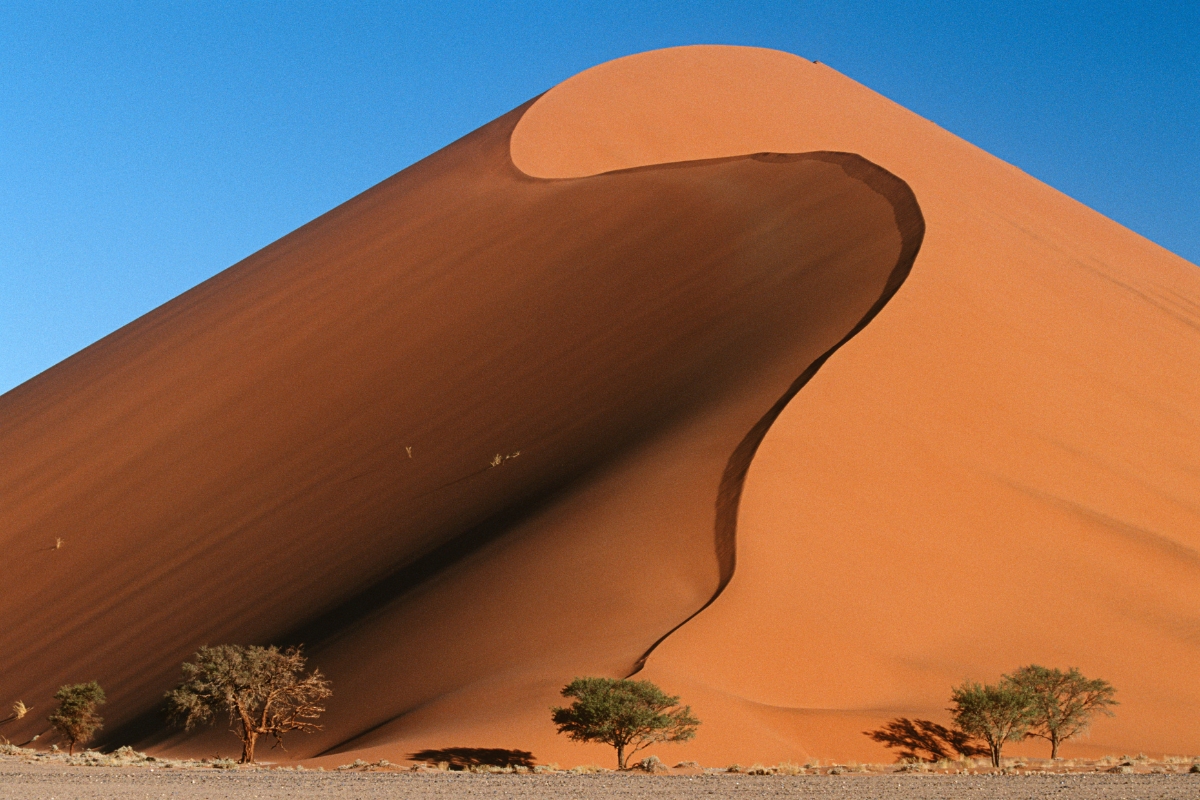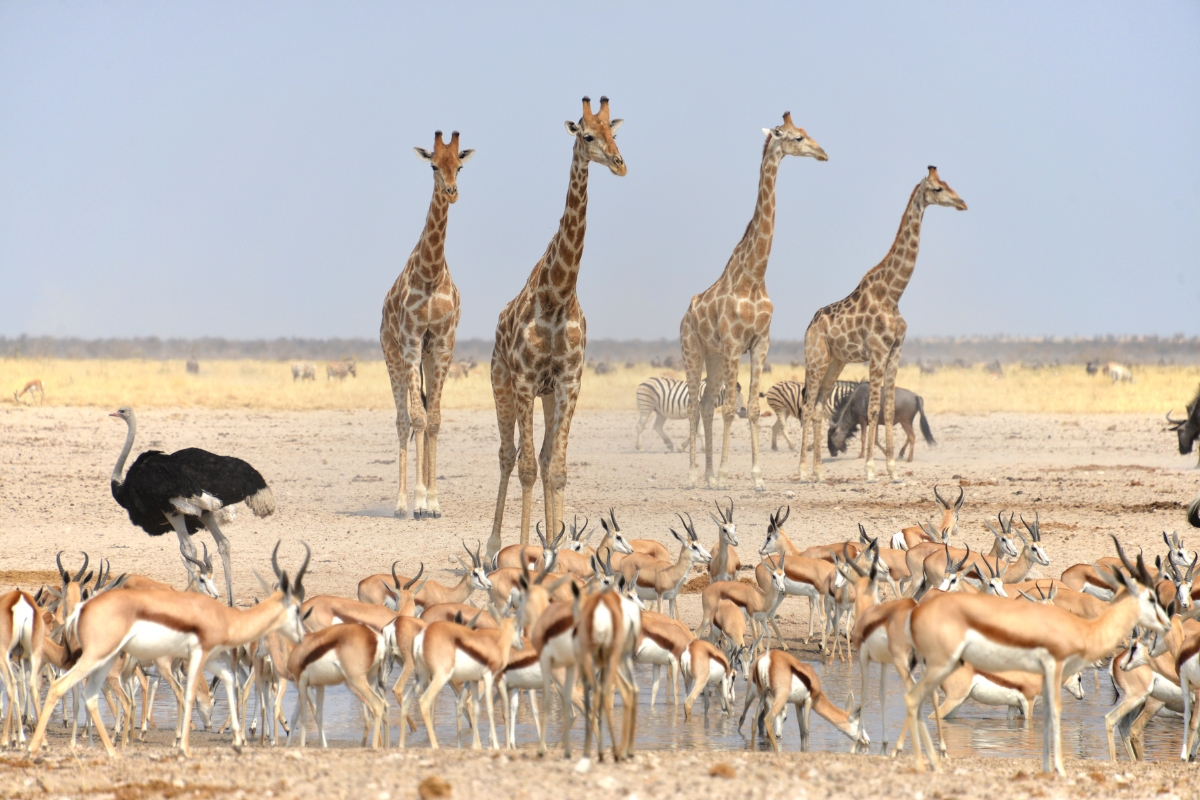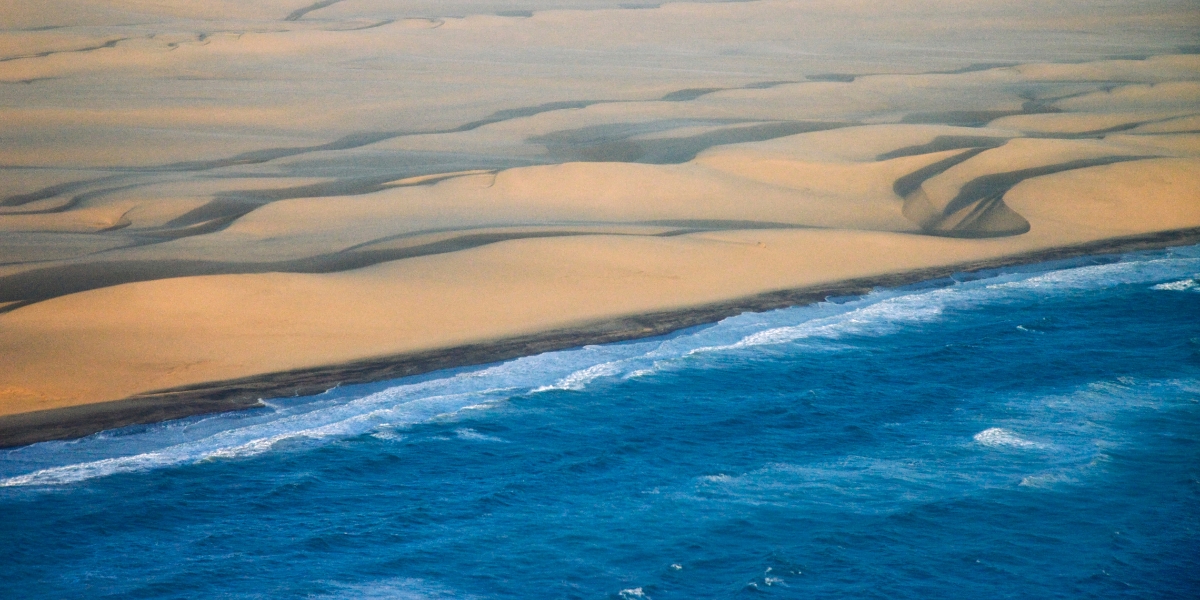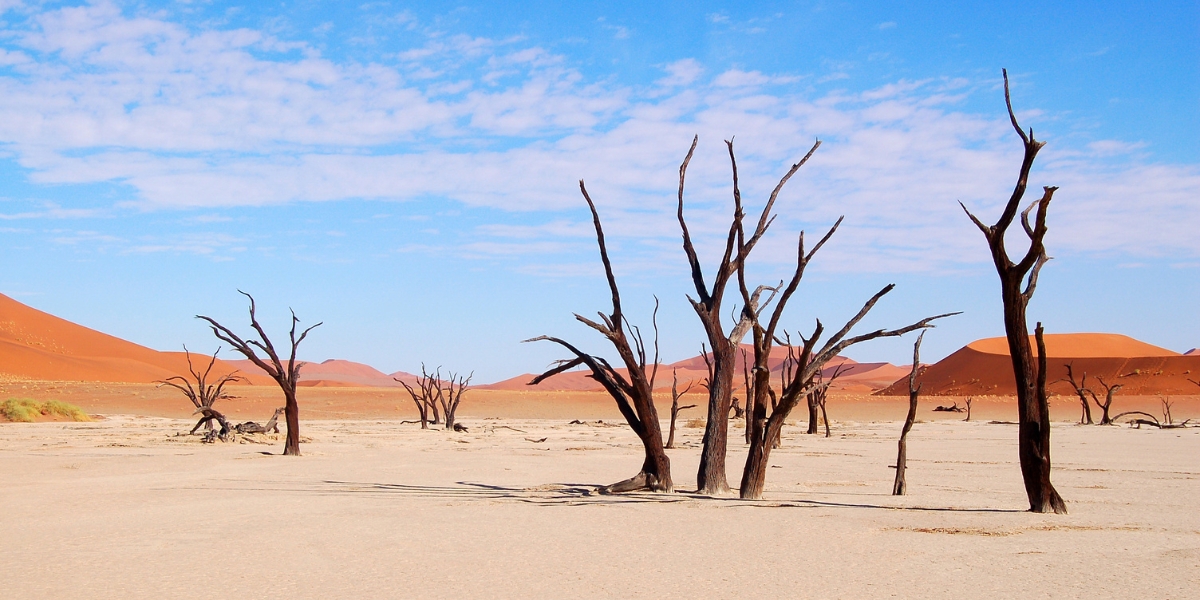


Namibia, a land of vast deserts, surreal landscapes, and striking wildlife, is one of Africa’s most unique travel destinations. From the towering dunes of Sossusvlei to the wildlife-rich plains of Etosha, the best time to visit depends on what you're after.
Summer (December to February): Hot, dramatic, and full of surprises
Section Type: standardWidthImageS
Etosha National Park is a must-visit for seeing Namibia’s beautiful wildlife.

Namibia’s summer is hot and rainy, especially in the north (southern Namibia receives little rain, year-round), but it offers a completely different kind of beauty. The arid desert landscapes burst into life with greenery and occasional dramatic thunderstorms that paint the sky. It’s also birthing season for many animals, so expect to see young antelope and other animal babies in Etosha National Park.
This season is ideal for photographers who want striking contrasts and dramatic skies, and for birdwatchers, with migratory species arriving in full force. While the heat can be intense in places like the Namib Desert, the crowds are minimal, and prices at lodges are often lower.
Fall (March to May): Cooler weather and shifting landscapes
Section Type: standardWidthImageS
Stunning landscapes of Damaraland.

As the rains taper off, Namibia transforms again. The temperatures become more manageable, and the landscape remains lush from the earlier rains. This is a shoulder season, meaning fewer tourists, great value, and still-beautiful conditions for exploring.
This is an excellent time to visit Damaraland, where desert-adapted elephants and rhinos roam against a dramatic mountainous backdrop. It's also a fantastic time to self-drive through the country, as the roads begin to dry and become easier to navigate.
Winter (June to August): Peak travel season and top wildlife viewing
Section Type: standardWidthImageS
Eerie yet mesmerizing Skeleton Coast.

Winter in Namibia is the dry season, and it’s also the best time for safaris. From June to August, water becomes scarce in the bush, and animals congregate around waterholes in places like Etosha National Park, making wildlife sightings predictable and thrilling.
Temperatures are cooler, especially at night (pack layers!), and the skies are endlessly clear—perfect for stargazing in the Namib Desert, which boasts some of the darkest skies in the world. This is also a popular time to visit Swakopmund and Skeleton Coast for adventure activities like sandboarding, quad biking, and marine safaris.
Spring (September to November): Warming up and wide-open spaces
Section Type: standardWidthImageS
Deadvlei’s trees are nearly 900 years old, yet they don’t decompose due to the dry climate.

Namibia starts to heat up again in spring, but the landscapes remain dry and open—ideal for wildlife spotting. This is still part of the prime game-viewing window, with excellent conditions in Etosha and the chance to explore more remote areas before the rains return.
The iconic Sossusvlei dunes are especially photogenic during this season, with crisp morning light and minimal haze. It's also an ideal time for cultural experiences, with many festivals and traditional gatherings taking place across the country.
Section Type: cta
Whether you're marveling at desert elephants, hiking through ancient canyons, or stargazing from a luxury lodge, Namibia is an unforgettable destination. Check out our most popular Namibia tour, then talk to a Destination Expert about tailoring it to your sense of adventure.


Company
Partners
Copyright © 2025 SA Luxury Expeditions LLC, All rights reserved | 95 Third Street, 2nd floor, San Francisco, CA, 94103 | 415-549-8049
California Registered Seller of Travel - CST 2115890-50. Registration as a seller of travel does not constitute approval by the state of California.










